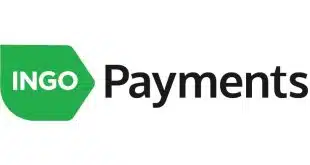By Jim Daly
@DTPayment News
Most of the chatter about how the debit card market has changed in the five years since the Durbin Amendment took effect centers on what market leader Visa Inc. is doing, or how the electronic funds transfer networks are maneuvering to stay alive and grow. But MasterCard Inc. is making big gains in PIN-debit, according to its latest operating results.
The No. 2 payment network on Friday reported that it processed 14.5 billion transactions globally in the third quarter, up 17.7% from 12.3 billion a year earlier. The transaction growth rate was up 4 percentage points from the second quarter and was “driven primarily by increased PIN-routing in the U.S.,” chief financial officer Martina Hund-Mejean said in a morning conference call with analysts.
In two examples, MasterCard recently expanded its relationships with two big debit card issuers, Minneapolis-based U.S. Bancorp and Birmingham, Ala.-based Regions Financial Corp. The agreements include “preferred MasterCard routing for their PIN-debit businesses,” president and chief executive Ajay Banga said on the call. Both banks also are Visa issuers.
The Durbin Amendment to the Dodd-Frank Act requires each debit card to offer merchants a choice of at least two unaffiliated debit networks for transaction routing, the idea being to increase network competition and lower merchants’ acceptance costs. While practically invisible to consumers, Durbin’s routing provisions have triggered a huge amount of jockeying among all the debit networks, including Visa and MasterCard. And some merchants claim that the global networks are trying to subvert their routing choices with EMV chip debit card transactions.
But both Banga and Hund-Mejean confirmed an analyst’s observation that a U.S. PIN-debit transaction yields lower revenue than other types of transactions. Banga also said that pricing isn’t the only factor that goes into merchants’ routing choices.
“If you go to some of the larger merchants, their level of sophistication that goes into the decision-making of the routing of a PIN-debit transaction is way beyond the price,” he said. “The price is interesting, and it’s kind of table-stakes, but they do enormously sophisticated thinking on the time taken for approval, on the number of turn-downs, on all kinds of aspects. You can move up and down the routing tables five times a day in some of these merchants, depending on what’s going on.”
MasterCard reported third-quarter U.S. debit card purchase volume of $152 billion, up 5.9% from $144 billion a year earlier, on 4.04 billion debit purchases, an increase of 7.3% from 3.76 billion in 2015’s third quarter.
In U.S. credit, third-quarter payment volume grew 3.8% to $174 billion from last year’s $168 billion. Credit purchase transactions increased 5.8% to 2.02 billion from 1.91 billion a year earlier.
MasterCard’s U.S. payment growth was somewhat muted by the loss of big issuer USAA, which is in the process of switching from MasterCard, its long-time credit and signature-debit network brand, to Visa.
Nonetheless, double-digit growth in combined credit and debit card purchase volumes in all regions of the world except Canada, as well as growth in services revenues, helped lift MasterCard’s third-quarter revenues to $2.88 billion, up 13.8% from last year’s $2.53 billion. Net income jumped 21.2% to $1.18 billion from $977 million.







